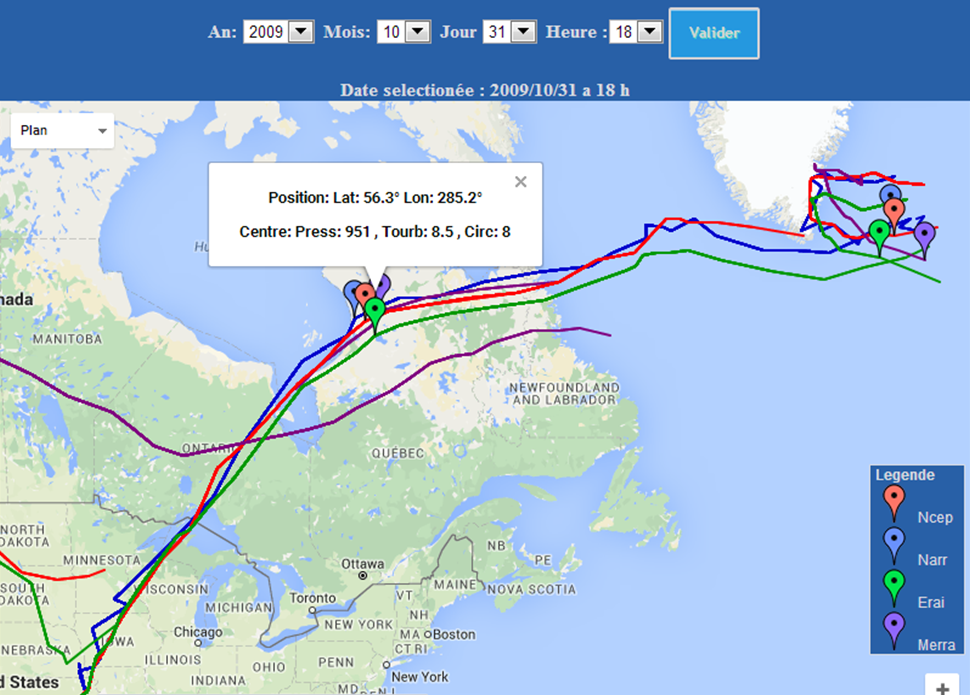Impacts of Climate Change on Storminess and Storm Surges in the Hudson Bay and James Bay Region
The availability of more reliable extreme water level statistics will enable designers and engineers to better assess the risks associated with extreme water levels for present and future infrastructure.
Project details
Principal(s) investigator(s)

Context
Storms in the Hudson Bay and James Bay areas cause many problems that affect the safety of local communities, the sustainability of coastal infrastructures and navigation activities in general. However, there is a lack of available data—especially long continuous series of observations—on water levels in this region. Without sufficient data, it is impossible to produce reliable water level statistics, posing significant problems for the design and maintenance of coastal infrastructures and the assessment of risk related to marine flooding and coastal erosion.
Moreover, recent research shows that climate change will have a significant impact on storm patterns and on the mean sea level in this region, hence the need for more data on the subject to avoid events such as drownings, canoe and boating groundings, damages to infrastructures and erosion of the shoreline.
Objective(s)
-
Using an ocean model, produce synthetic water level time series data and statistics on current climate extremes (1979-2013) and future climate projections (2041-2099) in James Bay, Hudson Bay and the Hudson Strait;
-
Improve the understanding of the impact of climate change on storminess and present and future water levels.
Methodology
-
Use a digital hydrodynamic model to model water levels for the period 1979-2013 and identify episodes of extreme water levels (stronger positive and negative storm surges) in twenty-three reference sites along the James Bay, Hudson Bay and Hudson Strait areas;
-
Develop algorithms and protocols to identify severe storms and their characteristics in the study area;
-
Validate the storm trajectory results (compare observations with simulations);
-
Apply the validated algorithms and protocols to climate models (future storms–2041-2099);
-
Compare past (1979-2013) and future (2041-2099) storms under simulated wave and water level conditions.
Results
Hydrodynamic modelling was used to produce synthetic series of daily water levels with a tidal component, a non-tidal residual and total water level for the period 1979 to 2013 for each of the 23 reference sites. Episodes of extreme water levels during which the strongest positive and negative surges occurred in five communities (Churchill, Rupert, Umiujaq, Ivujivik and Quaqtaq) between 1979 and 2013 were then identified using synthetic series of non-tidal water levels (Figure 1).
Figure 1. Hourly time series of extreme non-tidal water levels in fall 2012 at Stag Island in Rupert Bay. It can be seen that the model provides a good reproduction of the observations, increasing the level of confidence in the use of synthetic data series.
The findings confirmed that major positive and negative surges occur mainly during the fall season except in the northern part of Hudson Bay and in Hudson Strait, where some also occur in winter. The proportion of negative surges occurring in winter increases from the centre of Hudson Bay toward Quaqtaq in Hudson Strait. In Quaqtaq, even positive surges occur partly during the winter, and negative surges occur almost exclusively during the winter months.
Storm tracks and characteristics for these sites were also identified using a web application that can quickly find and display the full track of every significant storm and depression over North America, including the Arctic and part of the North Atlantic (Figure 2).

Figure 2. Application for tracking past cyclone systems over North America from 1979 to 2013.
The results obtained confirmed that every time a significant surge occurs, a storm is crossing the study area. However, each storm does not necessarily generate surges at all sites. For example, a storm may produce a major surge of close to 2 metres in Rupert Bay (Stag Island) but have very little effect in Churchill.
Negative surges are also associated with storms, but the link is less direct and it is probable that the presence of strong anticyclones (ridges of high atmospheric pressure) plays a significant role. Climate projections have shown an increase in the frequency of storm-related positive and negative surges over the study area in the future climate.
Moreover, the season for positive and negative surges (until now limited to the fall) will extend into winter. On the other hand, a slight reduction in positive surges is expected in the southern part of James Bay. The decrease in sea levels caused by post-glacial isostatic adjustment will attenuate the impact of increased positive surges, but accentuate the effect of negative surges.
Benefits for adaptation
Benefits for adaptation
The availability of more reliable extreme water level statistics will enable designers and engineers to better assess the risks associated with extreme water levels for present and future infrastructure.
The methods employed in this project can also be used to produce operational water level forecasts (tides and storm surges).
Scientific publications
Funding


Other participants
-
Groupe Lasalle Consultants
-
Ministère des Transports du Québec